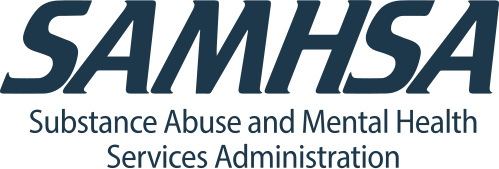Florida, like the rest of the country, continues facing an opioid crisis of extreme proportions. Since 2000, rates of opioid overdose in Florida have tripled, and in the midst of a global pandemic, they show no evidence of slowing down. But, why is this crisis so bad, and if we know opioids are addictive, why does it keep getting worse? We take a deep dive into Florida’s opioid crisis to understand how COVID-19, fentanyl, and fentanyl analogs have played a major role in the devastating increase in overdose deaths.
Opioid Abuse, Overdoses, and More: Before COVID-19
It is no secret that the United States has a problem when it comes to overprescribing opioid medications. Although the national average is 51.4 opioid prescriptions written each year for every 100 Americans, Florida’s prescribing rate is well above that.
Providers in Florida write approximately 53.7 opioid prescriptions for every 100 people. While these numbers may seem high, they are from 2018 — the year that marked the lowest rate of opioid prescribing in Florida since data such as this became available.[1]
In 2018, nearly 68% of the 4,698 drug overdose deaths in Florida involved opioids. Approximately 689 deaths were caused by heroin and 1,282 by prescription opioids other than methadone.[1] In 2000, however, only about 350 overdose deaths were caused by opioids.[2]
So, if prescribing rates are dropping, why are opioid overdose deaths continuing to rise?
Many experts believe high prescribing rates got so out of hand that many people got addicted to opioids and began purchasing them on the streets. Oftentimes, opioids purchased illicitly are also manufactured in clandestine laboratories, so it is impossible to know exactly what the substance contains. In many instances, heroin and other prescription opioids are found laced with fentanyl, an extremely potent opioid drug that has contributed to the increase in opioid overdose deaths in Florida.[2]
The Dangers of Fentanyl and Other Synthetic Opioids
Opioids are addictive and potent enough in their standard form. However, when mixed with fentanyl, they become far stronger and more deadly. Fentanyl has significantly worsened Florida’s opioid crisis.
Fentanyl is a powerful synthetic opioid that is 50 times more potent than heroin and 80-100 times more potent than morphine. It is a schedule II controlled substance that is usually only used to manage chronic pain in cancer patients or after surgery. Since 2013, it has infiltrated the black market drug supply, leading to a steep increase in opioid overdose deaths all across the nation. In fact, in 2017, 59% of opioid-related overdose deaths involved fentanyl. In 2010, only 14.3% of these deaths were thought to involve the powerful drug.[3]
Unfortunately, fentanyl isn’t the only synthetic opioid found on the black market today. Drug manufacturers have also developed fentanyl analogs which are chemically similar to fentanyl and just as potent. Some of these analogs include carfentanil, acetyl fentanyl, furanyl fentanyl, and, more recently, U-47700 or “Pink drug.”[4]
Carfentanil, for reference, is the most potent fentanyl analog. It can be up to 10,000 times more potent than morphine. Although it is only intended to ever be used as an elephant tranquilizer, it can be found in heroin and illicit drugs on the streets. The tiniest amount of carfentanil can be fatal.
Just as Florida has seen an increase in prescription opioid and heroin overdose deaths, they have also seen an increase in synthetic opioid overdose deaths.
The Impacts of COVID-19 on Florida’s Opioid Crisis
In 2019, Florida saw a small decrease in opioid overdose deaths. However, this trend did not last. When 2020 rolled around and the COVID-19 pandemic derailed virtually everyone’s lives, experts saw opioid overdose deaths increase nationwide. According to the Florida Department of Health, non-fatal opioid overdoses increase 40% in 2020 from 2019.[5]
While an increase in synthetic opioids in the drug supply is partially responsible for this increase in overdoses, there is no question that pandemic-related stressors also contributed to a major increase in opioid abuse. The pandemic continues to have major impacts on mental and behavioral health as it has caused widespread fear and anxiety, social isolation, political divisiveness, and so much more. All of these factors can contribute to an increase in drug and alcohol use, and, therefore, an increase in overdose deaths as well.
Find Treatment for Opioid Addiction in Florida
Opioids, regardless of which kind, are highly addictive and can be deadly. If you or someone you know is affected by the opioid crisis and struggling with addiction, our team at Daylight Recovery Center can help.
With a full continuum of care, we can help you begin your recovery with detox, address underlying issues with residential treatment, and prepare you for life-long recovery with discharge planning and aftercare. Contact us today to see if our opioid treatment program in South Florida is right for you.
References:



